




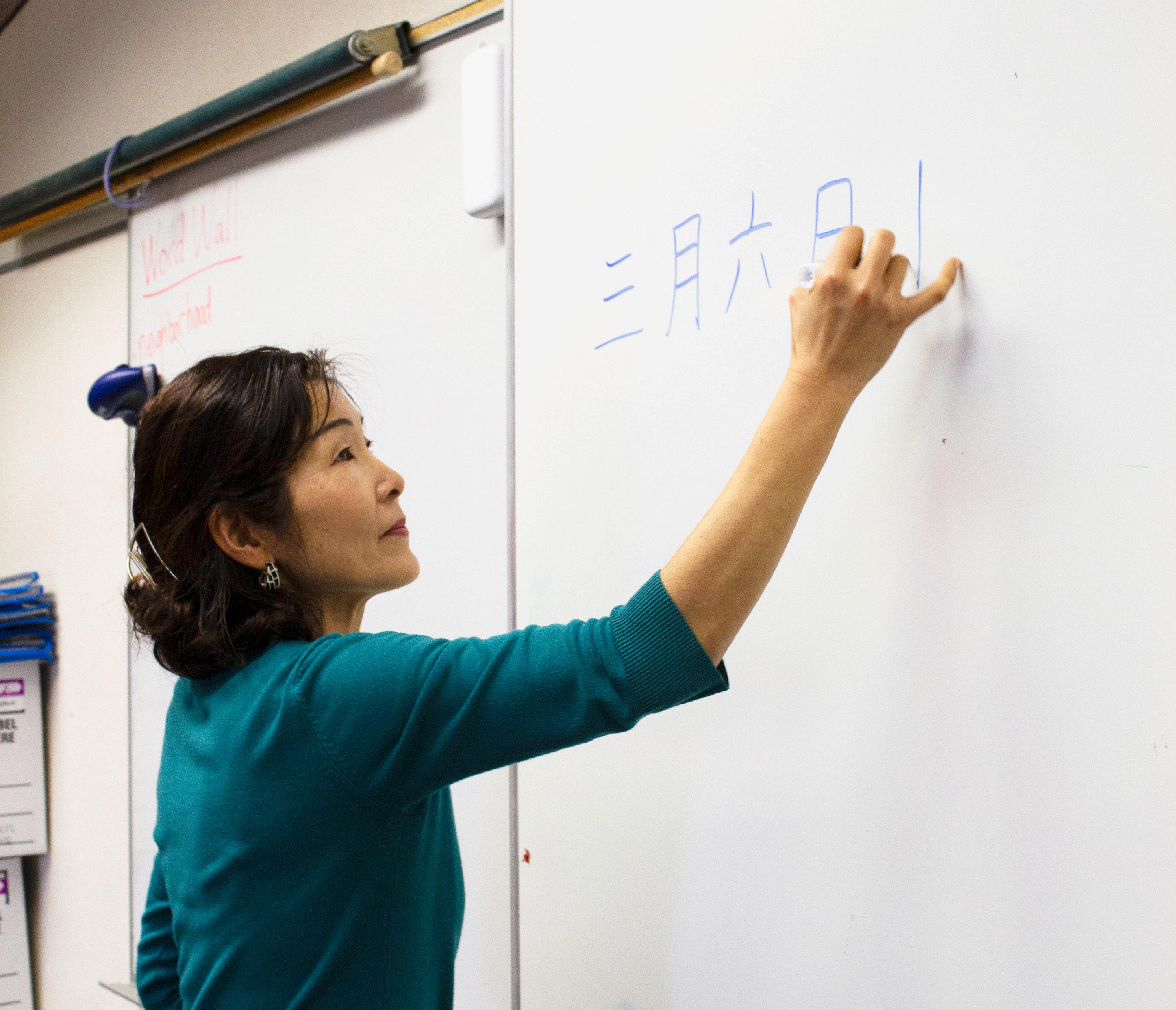
































 Junko Aoki
Junko Aoki




I would like to dedicate this book to one of my favorite teachers who has taught me since I was young, Junko Aoki. It has been a pleasure to work with her on this project and to share her story. She has been extremely helpful and supportive throughout the entire process from welcoming me into her home to long interviews over a cup of tea. Thank you so much.








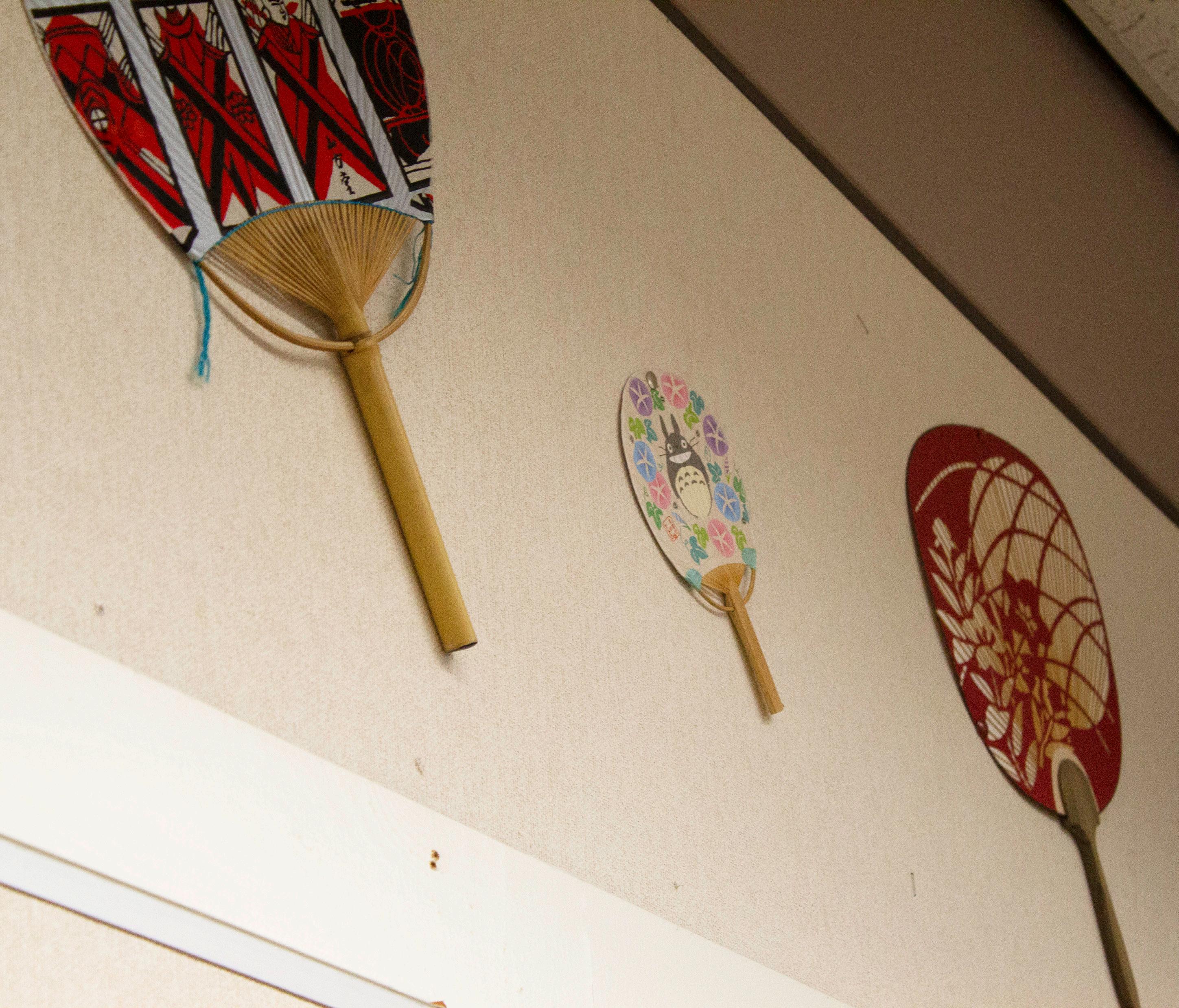














I would like to thank my teachers at Freestyle Academy for making this project possible, and providing me with all the necessary tools, programs, and support. I would also like to acknowledge my friends in both Design and English, whose encouragement fueled my motivation every step of the way.















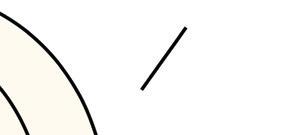





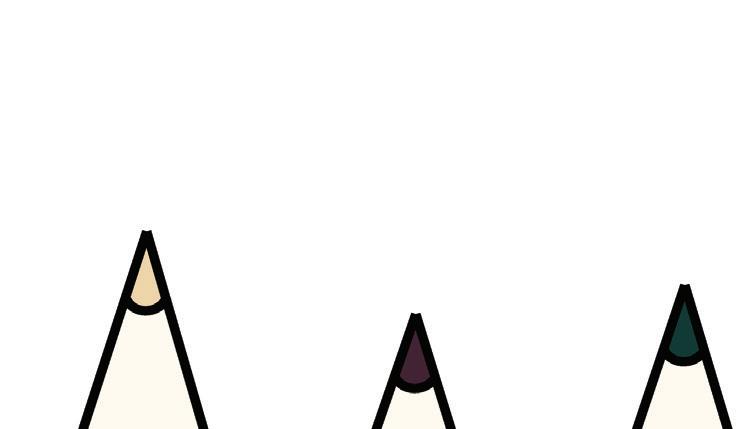
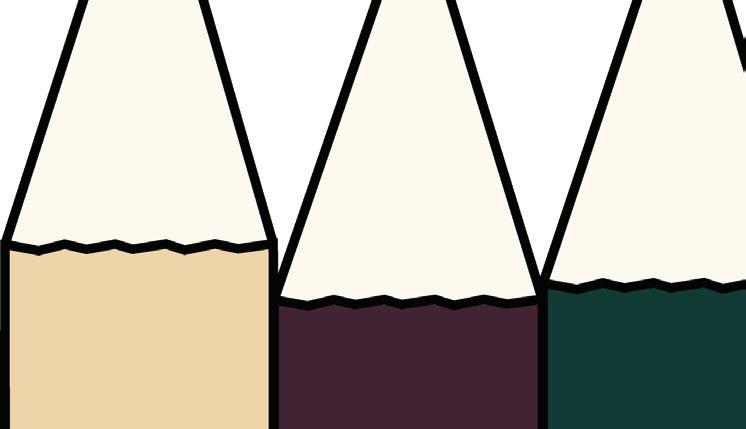

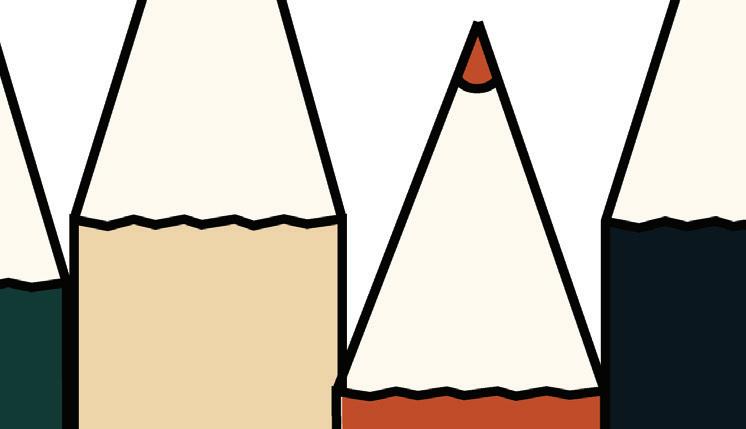
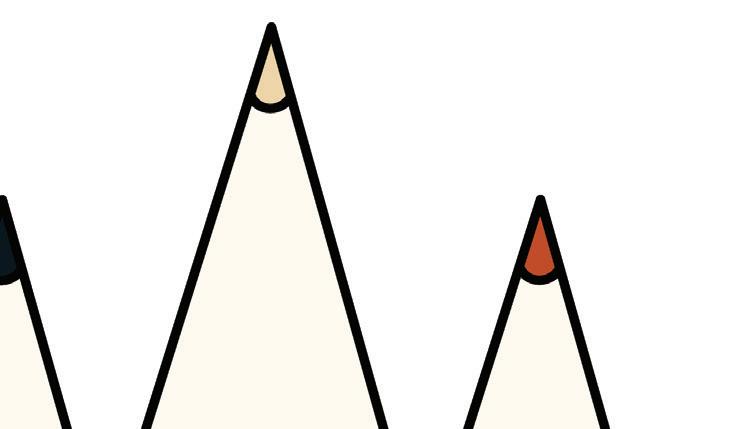
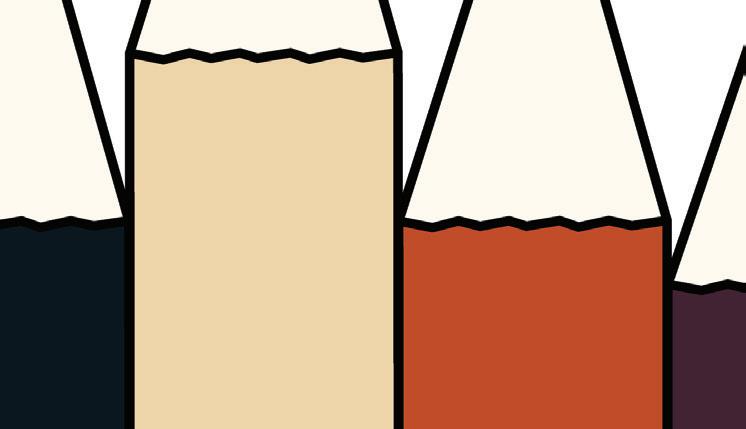
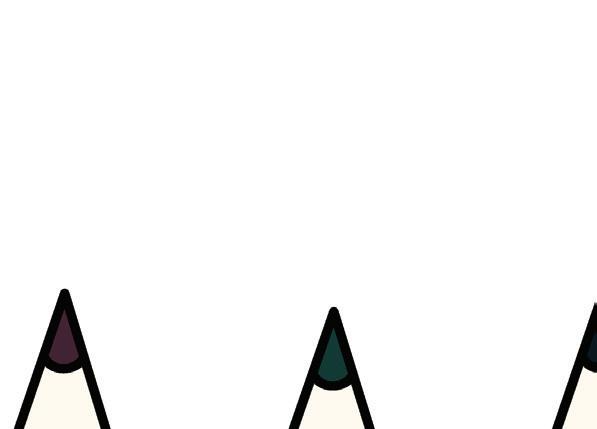
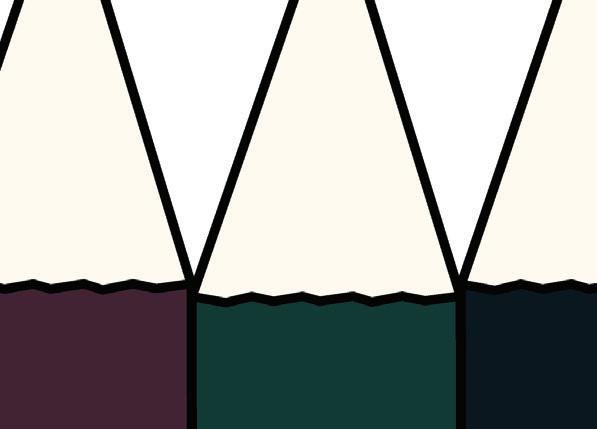


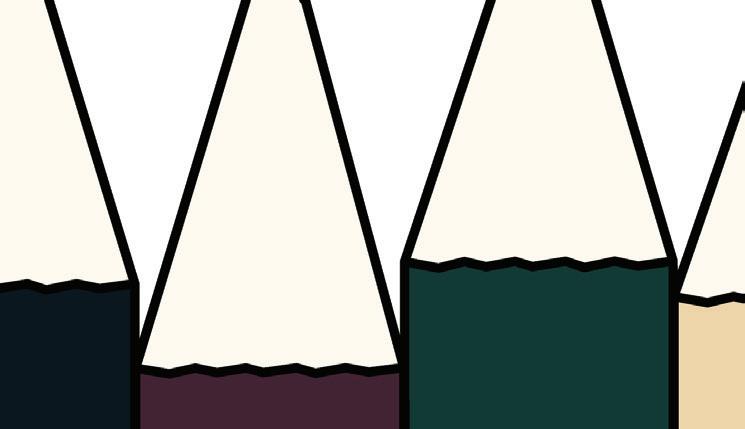
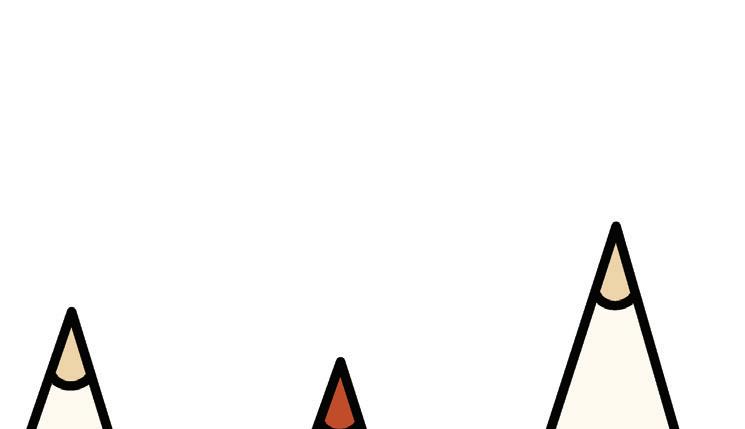


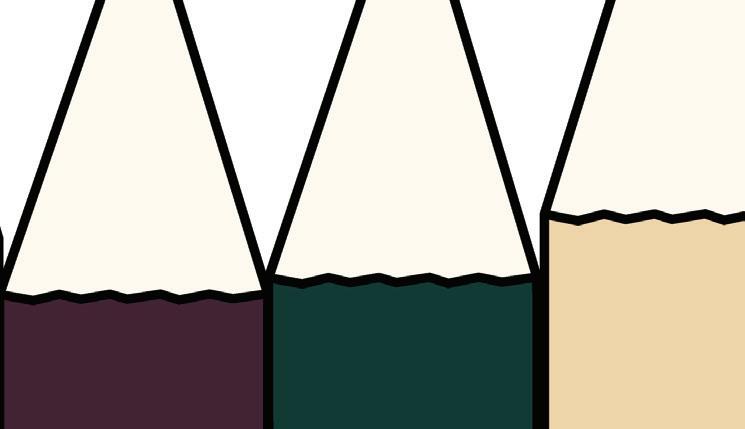
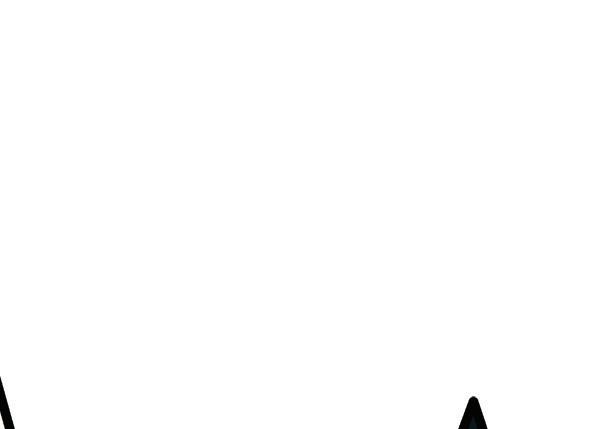


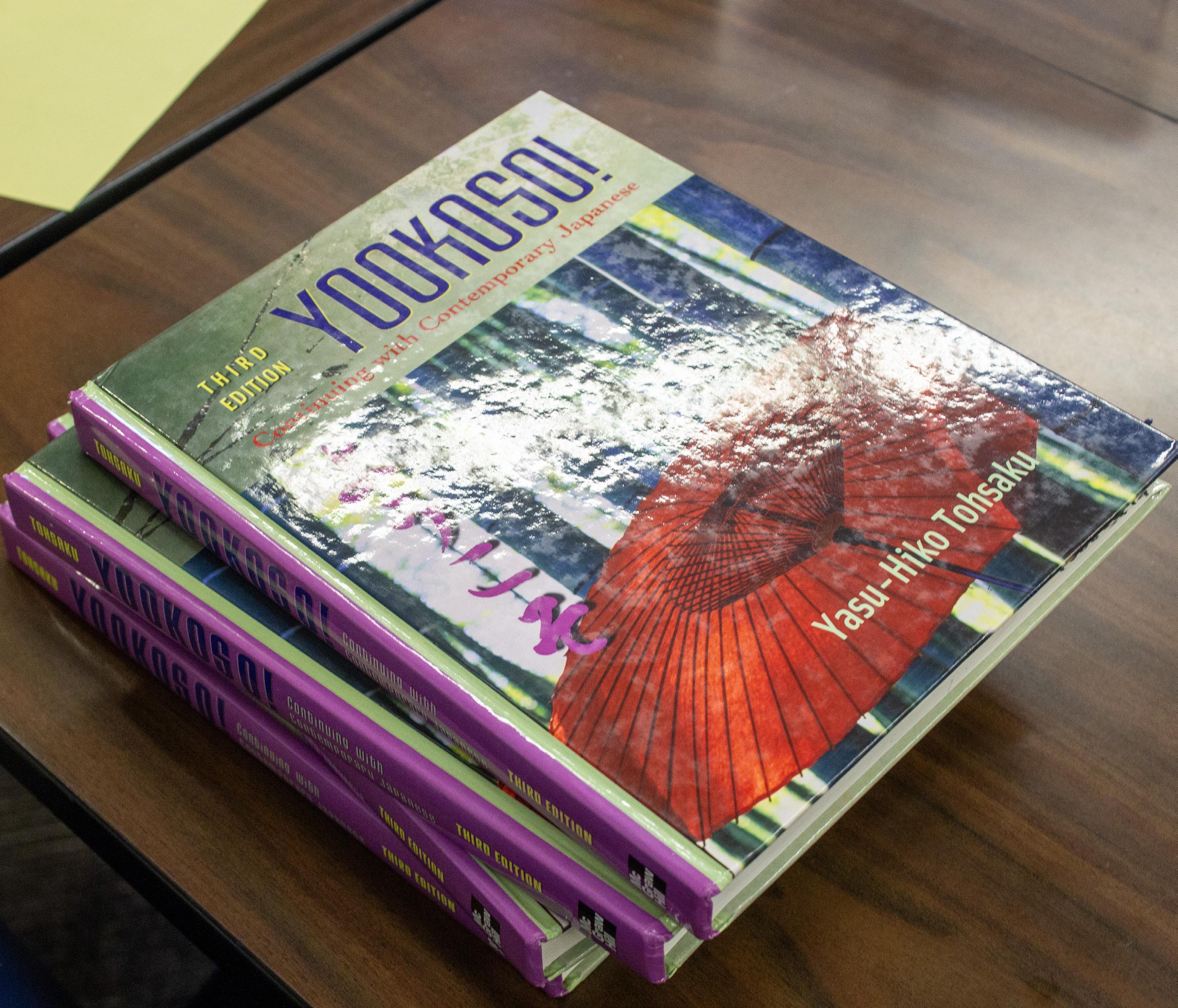




When I first received the Documentary project, I was quite worried. It was unlike anything I had ever tackled before, and my lack of experience in interviewing and profile writing left me feeling uncertain. Additionally, I questioned my ability to create a cohesive design for the book. However, as the project unfolded, I was able to overcome this fear, and instead see the freedom I had. Though it was tough to narrow down what I specifically wanted to research, the power to make choices ultimately alleviated much of the pressure I had been feeling.
This project has served as my introduction to Adobe InDesign, which I used for the layout. At first glance, this software can seem daunting, but soon I found myself navigating it with ease and feeling excited to bring my ideas to life. I can see myself using the same skills like managing layers in InDesign, and creating graphic design elements in Illustrator, and am very happy with the new skills that I learned and can apply to other future projects.




Due to the original Japanese Teacher leaving on maternity leave, I had learned Junko Aoki would act as her replacement at Mountain View High School, and with her vast experience of being




a teacher, I thought that she would be an exciting subject. Throughout her life of being a teacher, mother, as well as moving across the world multiple times, I saw an opportunity to explore new perspectives I would have never thought before. Despite knowing her since my first day in Japanese School in first grade, I felt like I was able to learn more about her and her background, seeing her not only as an educator but as a role model. Throughout this book, I aspire to capture her vibrant personality and unwavering passion for teaching.



Throughout the creation of this project, I worked through numerous obstacles to reach an outcome I am proud of. Being able to hold this book within my own hands fills me with excitement, knowing the countless hours of hard work that went into its creation. I know that I can look back to this in the future, and not only see how much I’ve improved, but to also showcase how special it was to be able to create something like this. I hope that I can help spread hope and excitement for future students through her story, and to show that even though learning can be a hard challenge, you should never give up, and that there’s always something or someone there for you.



















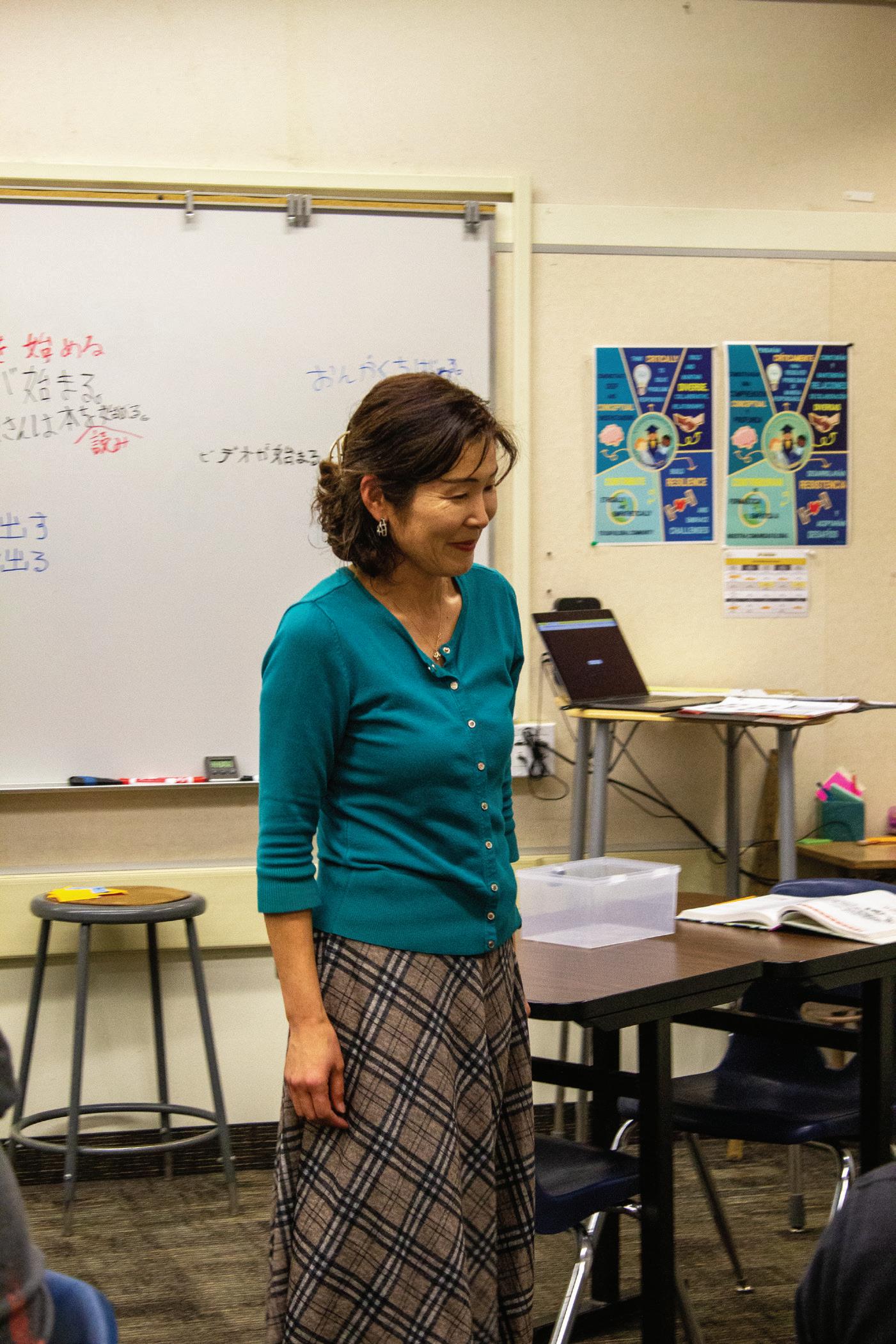





With a bold stroke, a student quietly rebelled in the classroom, defying educational norms. The bell echoed, signaling the start of another day, as students eagerly prepared for lessons amidst the scent of sharpened pencils and shuffling papers. Class began, with them revising old assignments, red No 2. pencil the only tool allowed. Mechanical pencils were strictly forbidden, yet the plastic shine of a young student’s mischievousness caught her, the teacher’s, eye. They were not holding a red pencil. Instead, a brand new mechanical pencil, the flashy kind the color bright blue with a retractable eraser was gripped between their fingers. She didn’t yell, nor did she comment. Despite having broken the rules with a mechanical pencil, the student’s act of defiance, disguised as compliance, was ignored. The next day, she









heard the student gasp when the papers were redistributed. With trembling hands, the troublemaker scanned the paper, their eyes widening in surprise as they were met face-to-face with the teacher’s score of approval. They glanced up to look at the teacher, only to be met with her knowing smile. The next class, the student arrived with a new red pencil and sharpener, marking a subtle shift in their defiance.
In societies characterized by strict social hierarchies and competitive educational systems, being versatile is essential to providing effective education, working around the bubble, and fostering inclusive learning environments. Junko Aoki, a teacher of over 18 years, has made it her goal to continue to nourish her students’ minds and create a fun and engaging classroom despite cultural barriers.
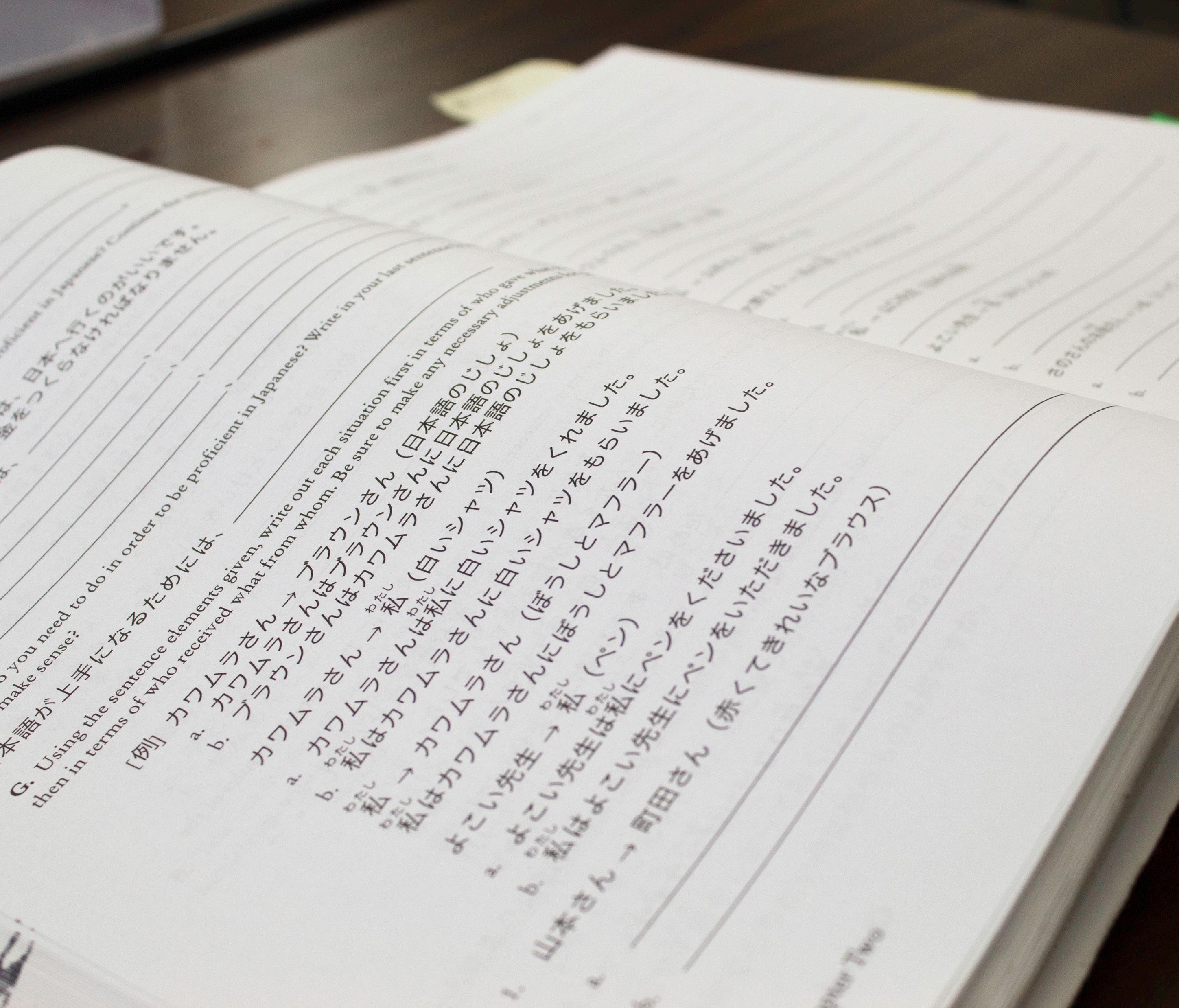







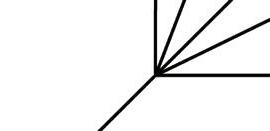




Living in a rigid social structure or social bubble often creates an environment that one might not even realize they are participating in.






significantly depending on the country or region one resides in.









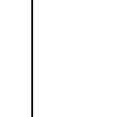












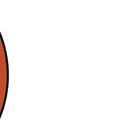



Social bubbles can be described as “the natural state of affairs for human beings. People seek out similarities in their marriages, workplaces, neighborhoods, and peer groups. The preferred sociological term is ‘homophily’— similarity breeds affection” (Thompson). This feeling of seeking out similarities causes “bubbles,” or groups of people to stick together because of their similar ideologies or characteristics. These bubbles can exist on smaller scales, like friend groups or neighborhood communities, but can also be seen on larger scales–such as whole countries. Depending on where you live, these norms could differ vastly. For example, in the United States, when one meets someone for the first time, common practice says to shake hands. In Japan, people bow instead. In France, kissing on the cheek as a greeting is a common social norm. These cultural differences, present even for just simple greetings, illustrate how social norms vary











Junko Aoki has experienced the stark contrast between many cultures, but she doesn’t judge. “I think it’s wonderful that people live here with such pride.” She expresses her admiration for individuals who embrace their cultural identity with confidence and pride, demonstrating her ability to recognize and appreciate the beauty in different cultural norms and values. This versatility has also helped her become a better teacher, thanks to her being able to adapt to her surroundings. Having lived in Japan where collectivism is the norm, and in America, a“Western [country that] tend[s] to prioritize individualism,” (Nickerson) she has a unique perspective when it comes to operating in these spaces.


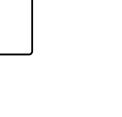
While Aoki grew up in Japan, she moved to the States when she turned 28, after marrying. When she moved, she came into herself in a new way, supported by the individual priority that the culture supports. She learned how to be more direct. She learned how to express her opin-
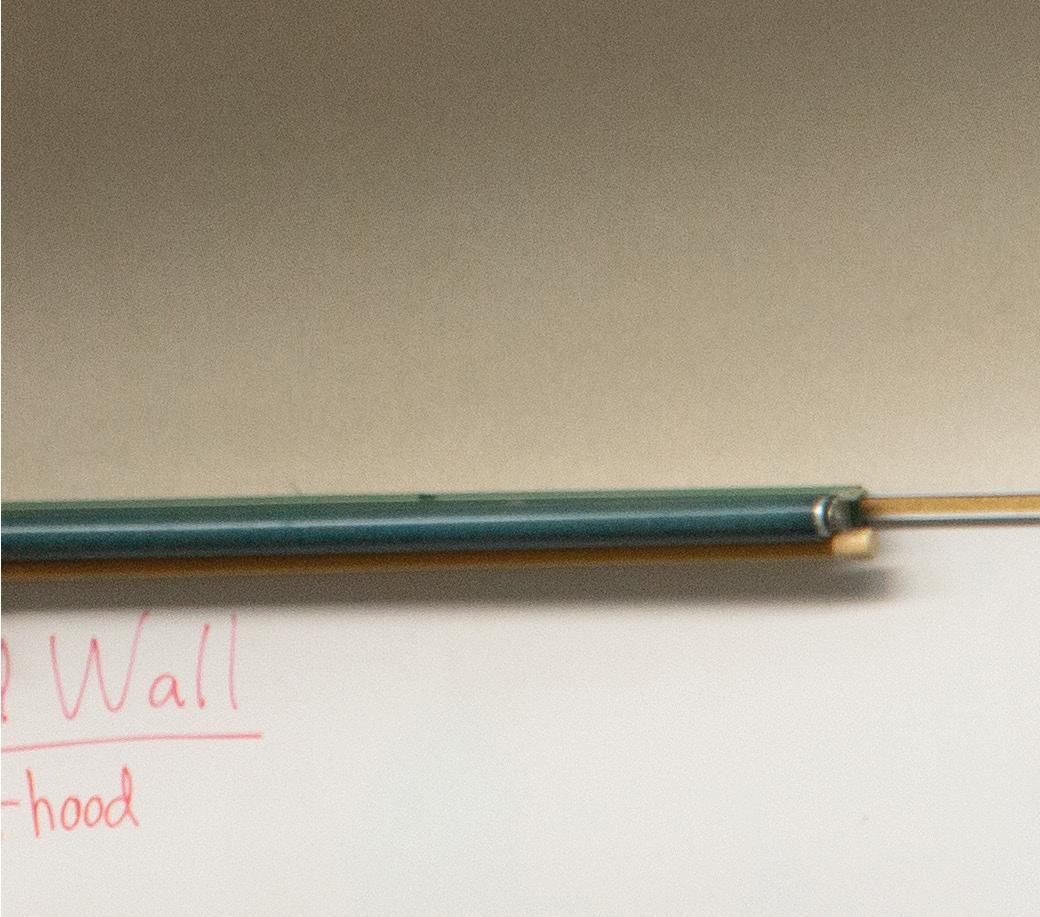
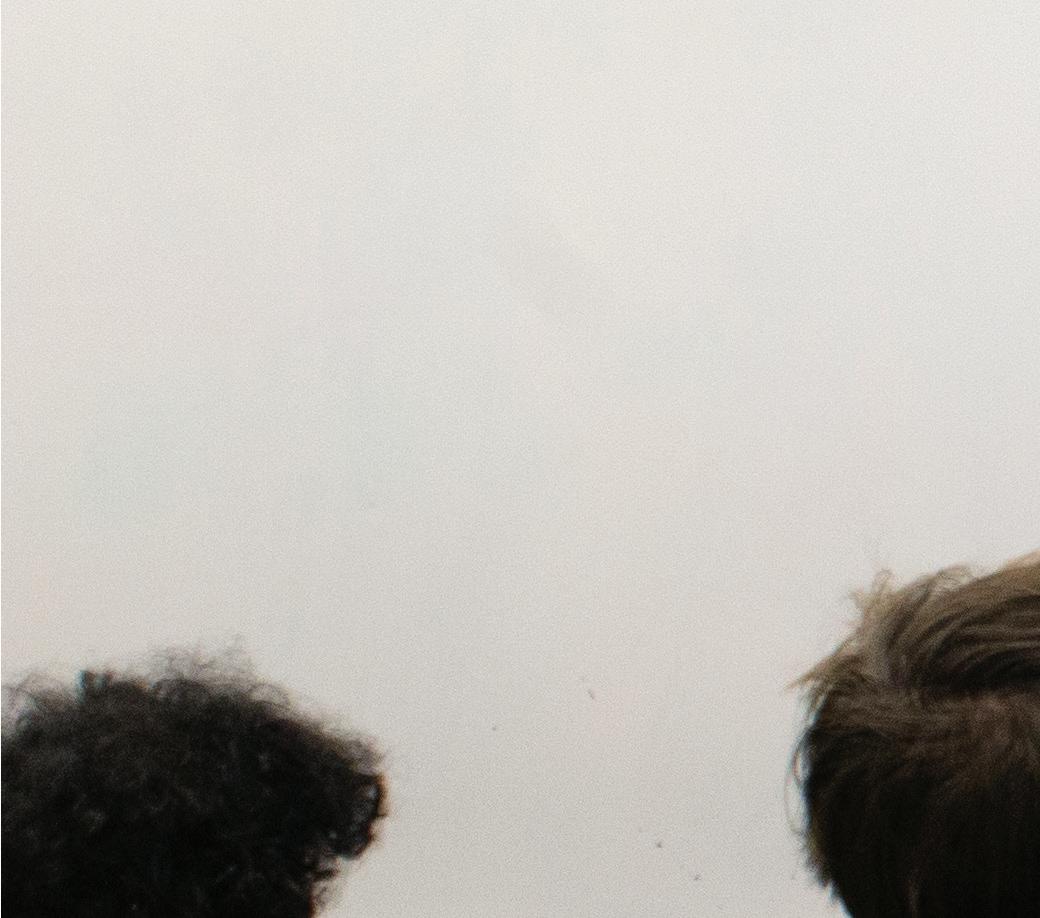

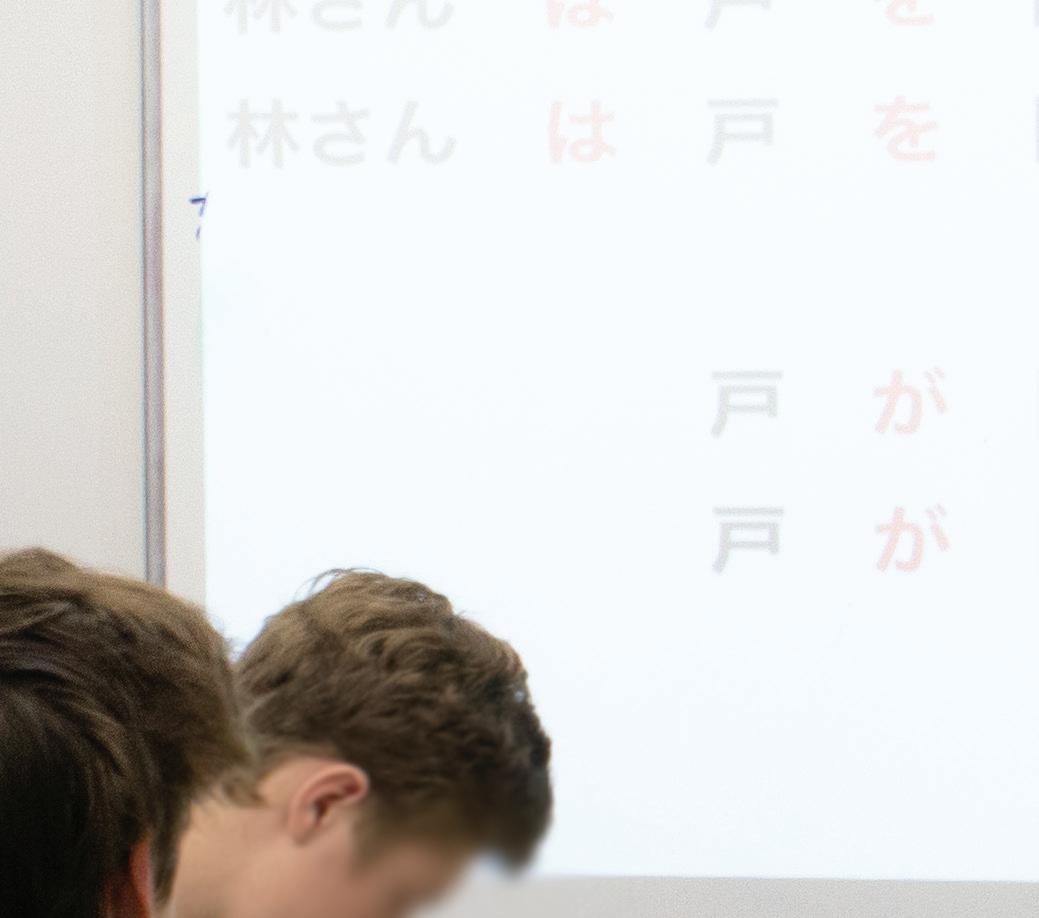



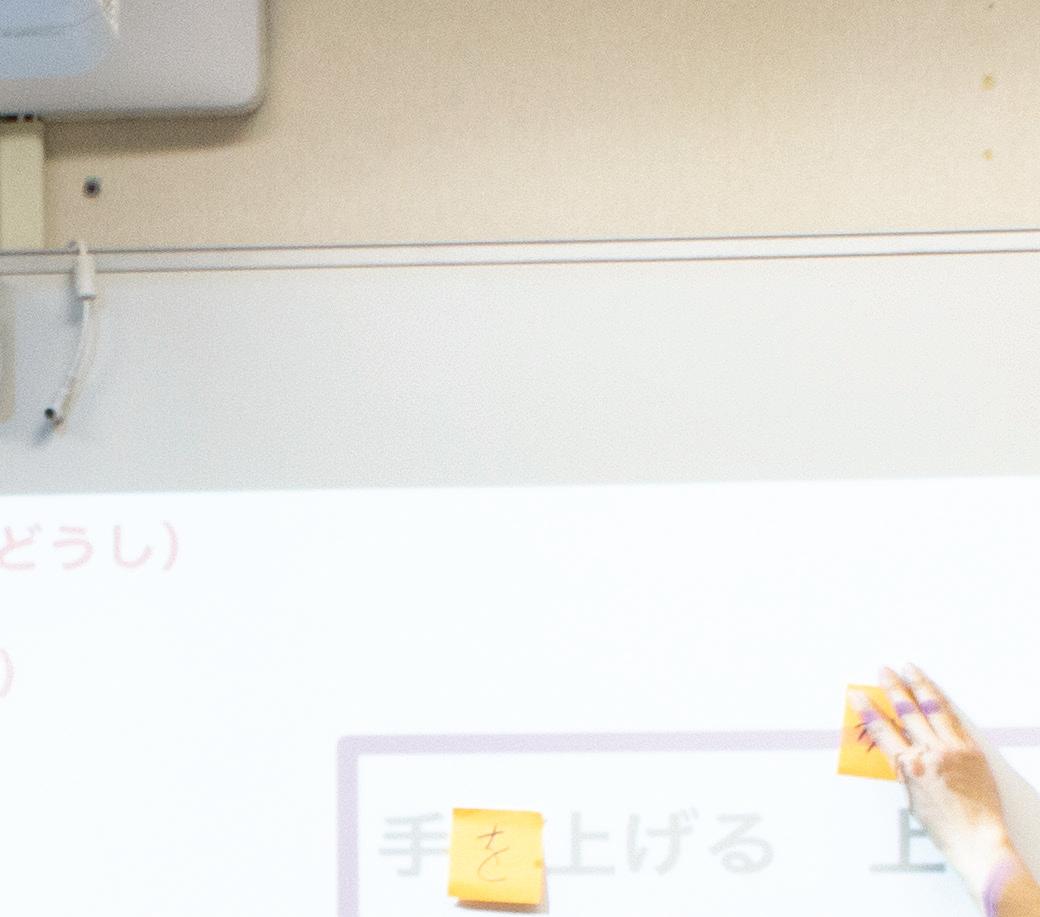
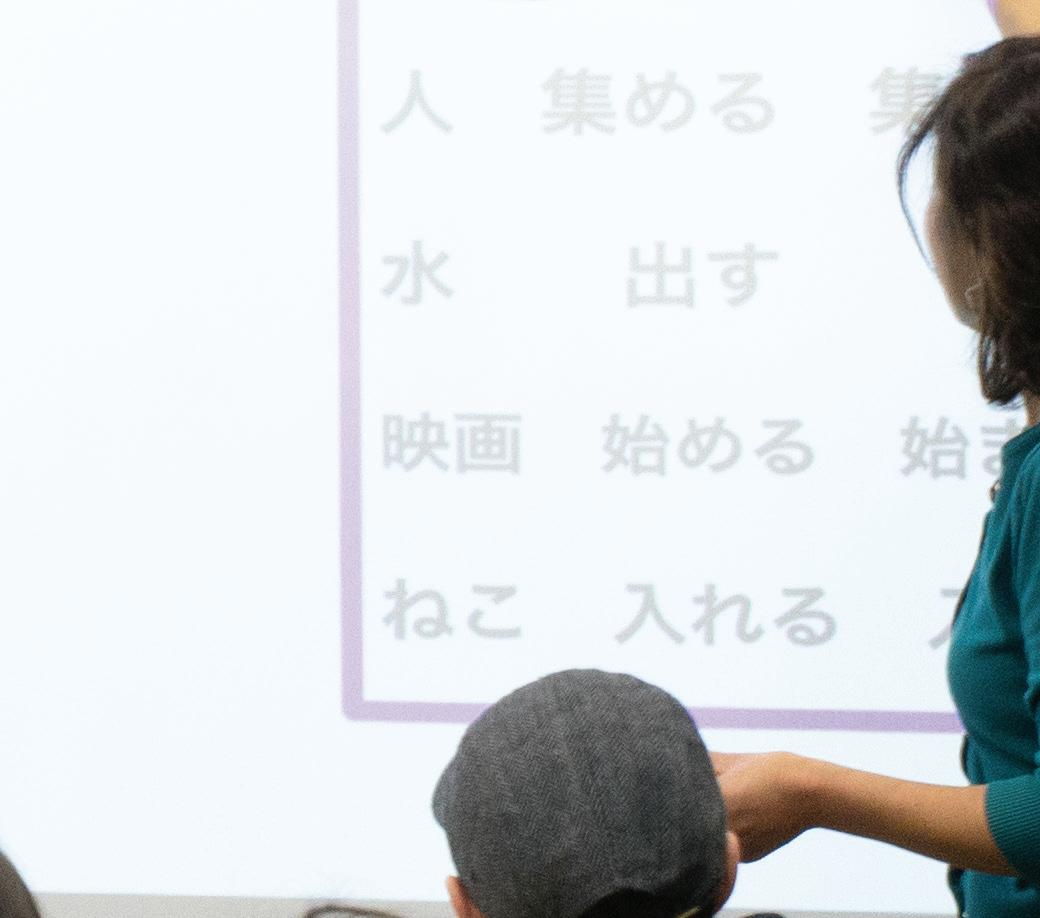
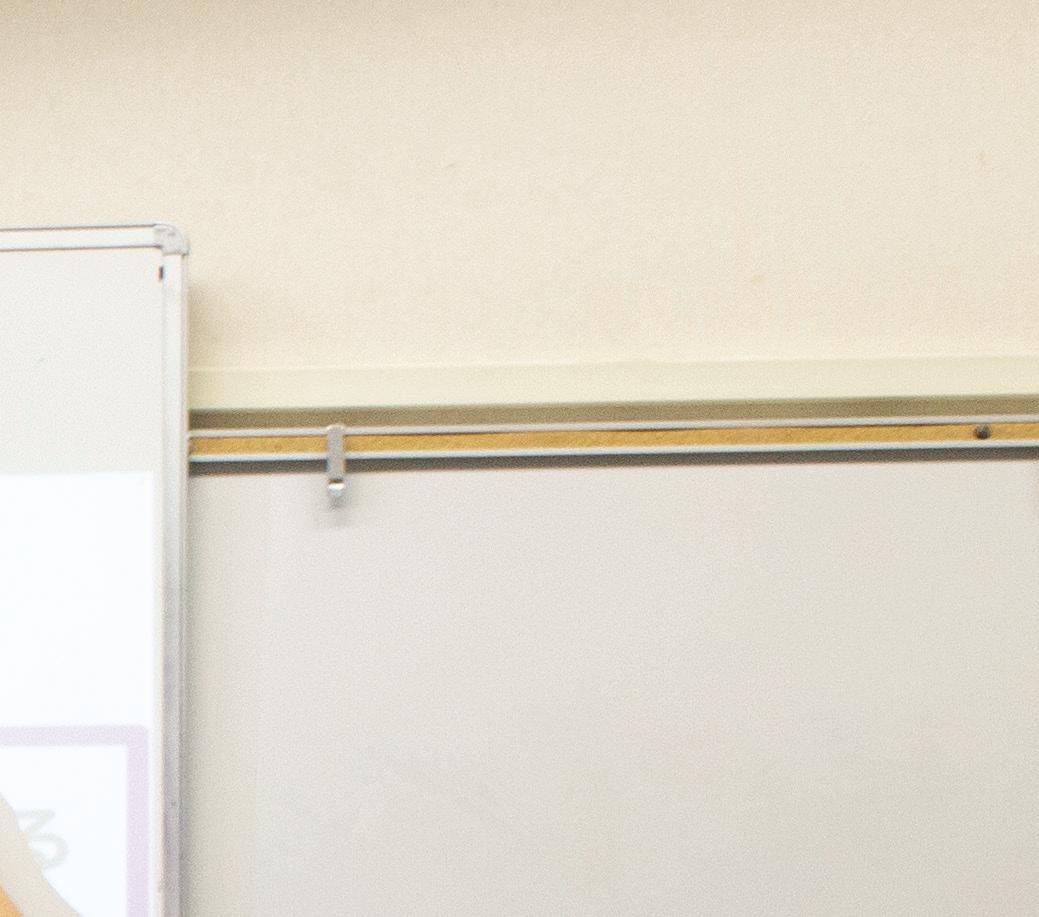
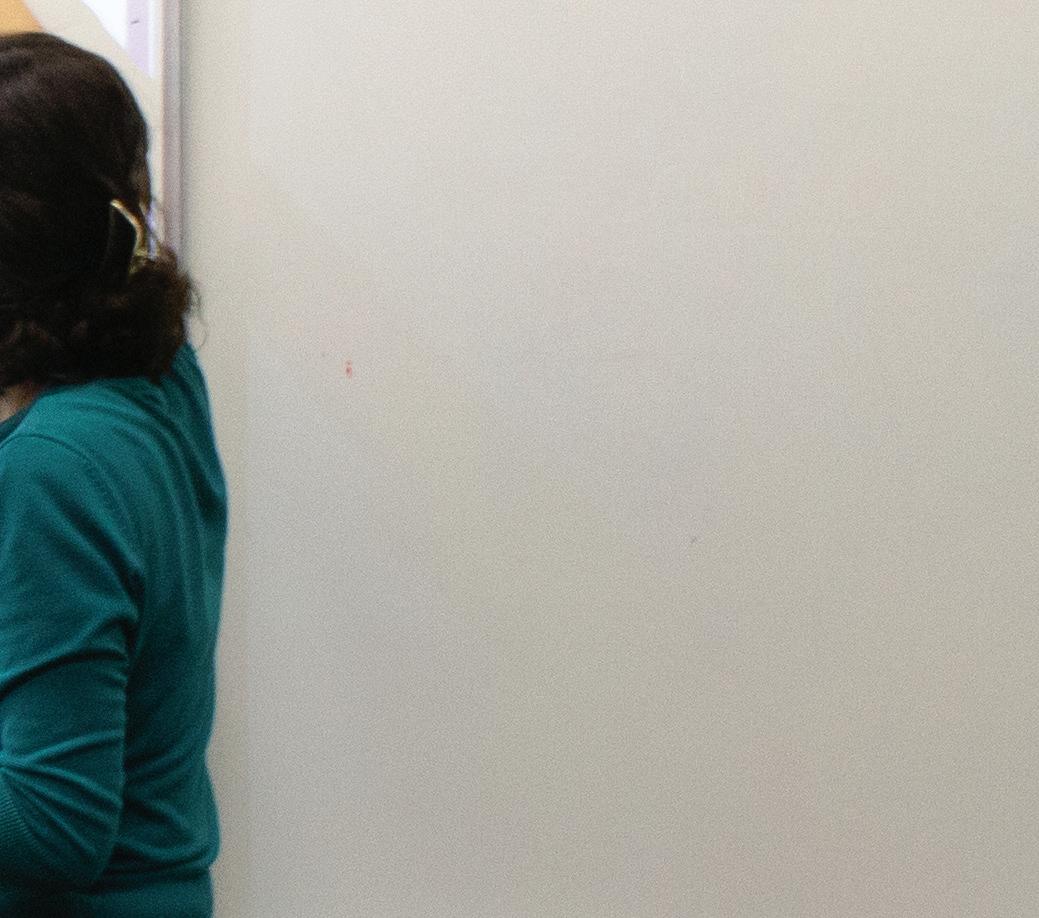


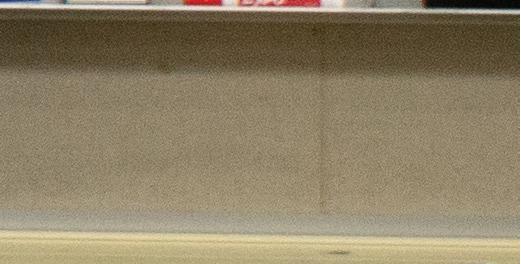
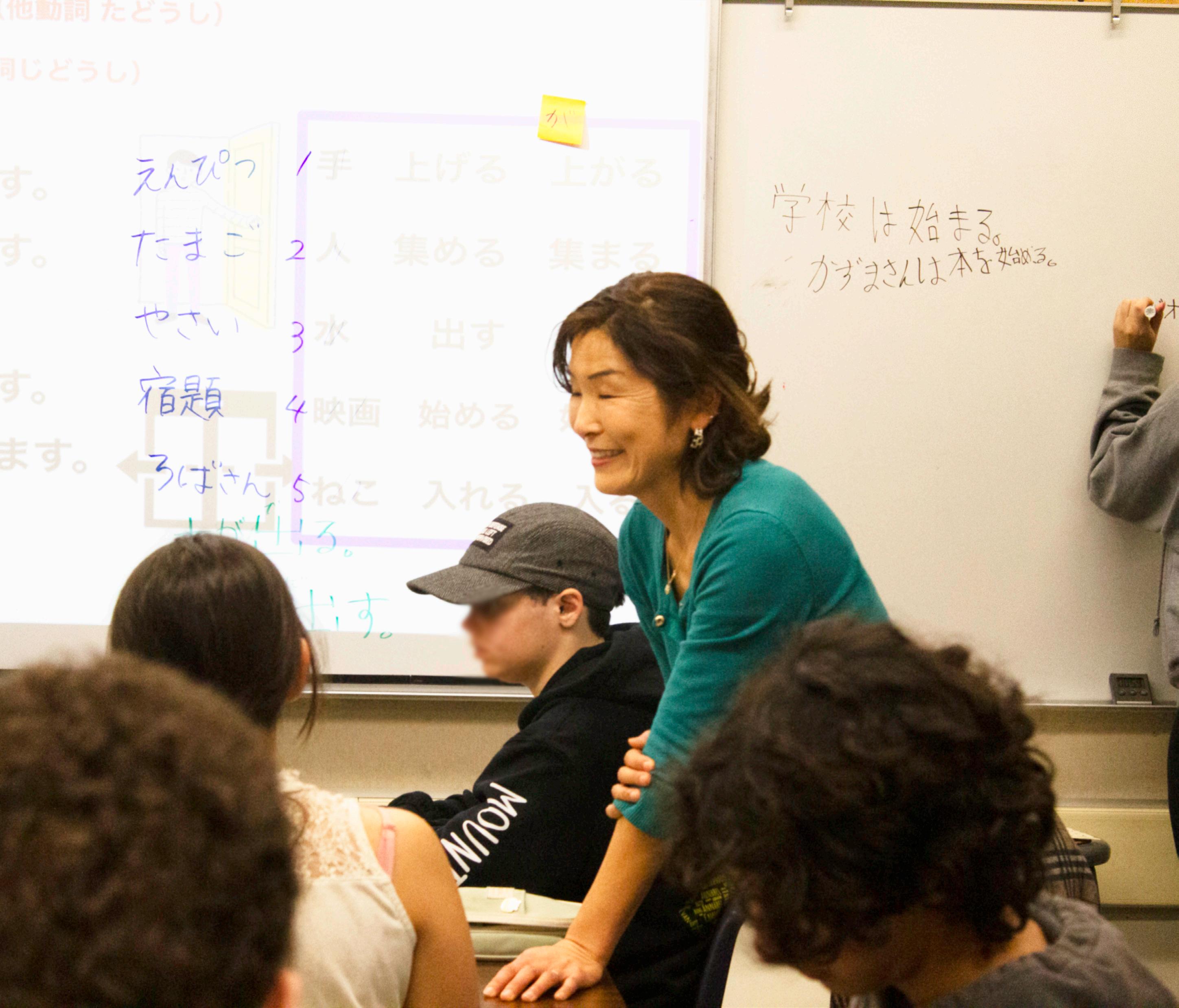
ions without worrying about breaking the hierarchical structure. She learned how to be more outspoken when needed.
Yet whenever she goes back to Japan, she reverts back to her way of acting before she came to America, complying with the maintaining of social harmony and the prioritizing of the group over the individual. For example, “If I couldn’t go somewhere because I was busy today,
to in America, where asserting your own personal identity and culture is more important than conforming to the same expectations as the people around you.
In America, Junko Aoki embraces the cultural norm of direct communication, where expressing one’s thoughts and feelings openly is valued. Unlike in Japan, where subtlety and implicit cues are often preferred, Aoki finds comfort in
" I think it's wonderful that people live here with such pride."
Junko Aoki
instead of saying, ‘I’m busy today and can’t go,’ I might say, ‘I’m feeling a bit unwell today.’... That’s the Japanese way or style. It may seem distant and cool, but it is a virtue and is often called a beautiful culture.” While focusing on collective welfare and social harmony in Japan, their norms encourage individuals to consider the impact of their actions on others and prioritize cohesion over individual expression. As the Japanese say, “When in Rome, do as the Romans do.” Or, as Aoki says, “If you’re white but everyone around you is red, it is better to also become red.” This reflects the importance of assimilating or conforming to the culture’s norms and rules around them. In Japan, it was an advantage and more socially acceptable to adapt to the dominant culture rather than stand out by asserting one’s identity, as opposed
being able to voice her opinions without reservation. For instance, she notes that in America, if she finds her tea too hot, she’ll straightforwardly state, “This tea is too hot,” a stark contrast to the more indirect approach commonly seen in Japan. This preference for direct communion in the bubble of American culture shows how assertiveness and self expression are encouraged in


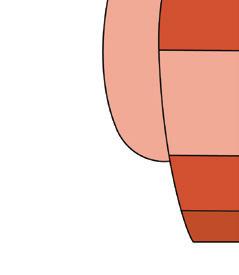


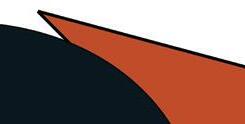















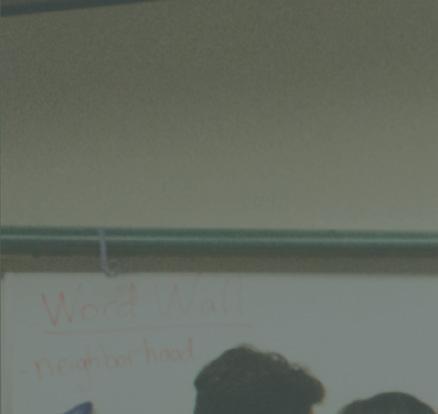


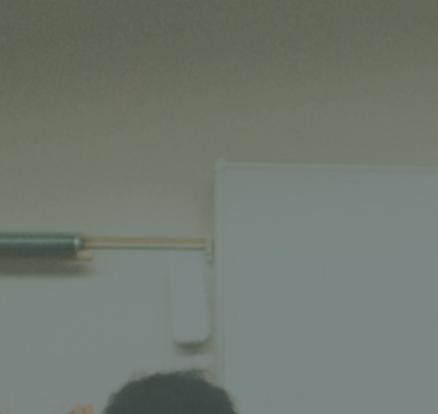

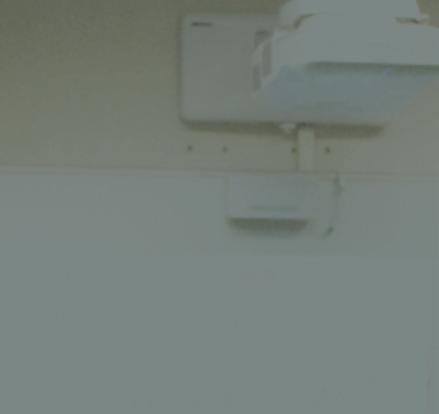




"If you're white but everyone around you is red, it is better to also become red"

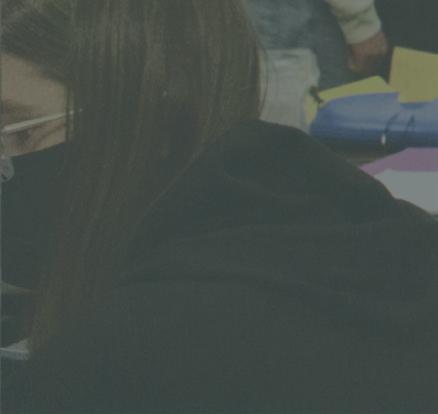
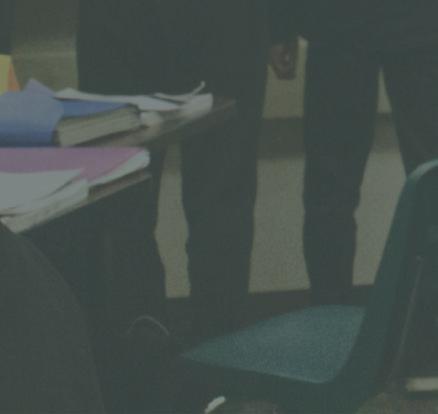
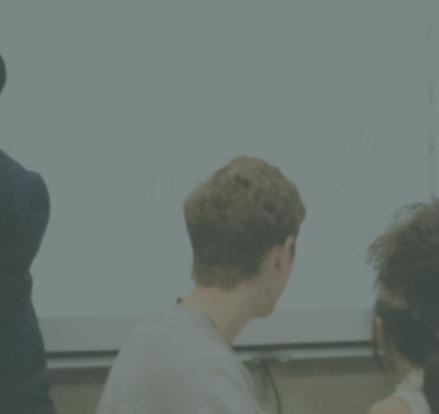

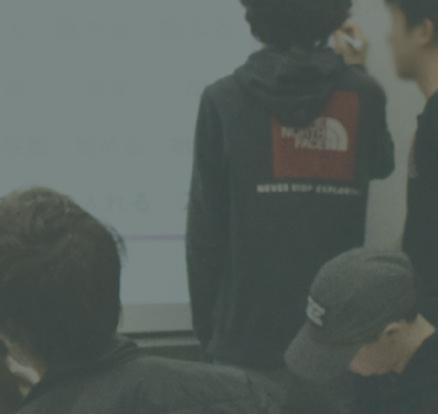

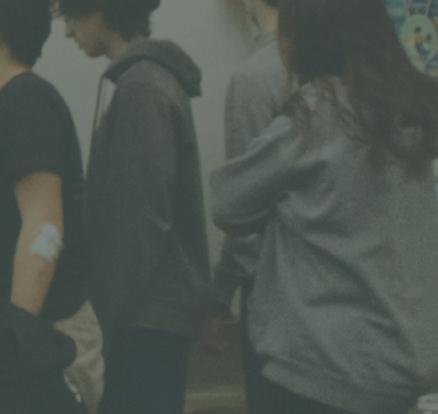
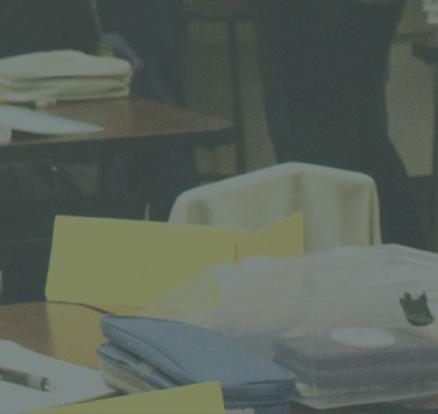
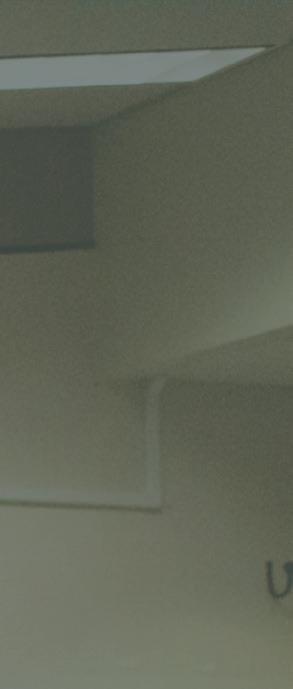
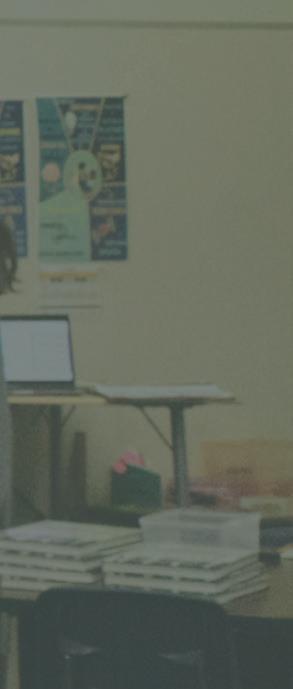

Students working together on the whiteboard
















































contrast to Japanese collectivist culture. Her ability to adopt her style depending on her culture highlights her willingness to embrace different cultural norms reflecting her adaptability and open-mindedness, allowing her to navigate effectively within different social bubbles.
She knows that wherever she goes, even within a completely different culture, norms, or social bubble, her versatile personality allows her to adapt to the space around her. Her adaptability enables her to connect with students from diverse backgrounds and create an inclusive atmosphere where all students feel valued and supported in their learning journey. By embracing versatility, Aoki transcends the constraints of rigid social structures and competitive schooling environments, thereby empowering her students to thrive academically and personally.








































































Competitive schooling environments, such as those found in Cupertino, place immense pressure on students to excel academically and stand out among their peers. Originally, she had decided to move to Cupertino as there was a powerful Asian community that she would be able to connect to, and only fully realized how academically motivated students were in her area. Drawing from her experiences of living in Cupertino and watching her children grow up in the area, Aoki recognizes the effects of the hyper-competitive atmosphere.
“In most places, they just see who you are, but in Cupertino, they only see who you are in the future, or who you are going to be in the future. It’s not about the present, it’s about what comes next” (Aoki). In other words, if you were a student who was able to stand under



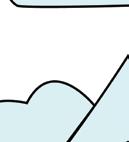
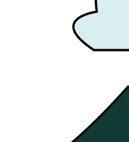



the pressure, you would be considered a “good student”, but the moment you could not comply under the pressure, you would be labeled as a “bad student” even though it might not be entirely true. The pressures commonly associated with succeeding academically could be having straight A’s, doing many extracurricular activities, being a part of large leadership roles, and many other activities. She could see this effect in her own children, as well as her many students, and could notice how not everyone was made for this busy lifestyle. Aoki recounts her own experiences with her children, her most competitive child excelled academically and was one of the top students in her class taking on many leadership roles and other extracurricular activities, eventually joining an Ivy League College through her determination and confidence
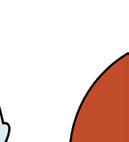

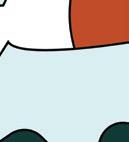





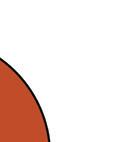






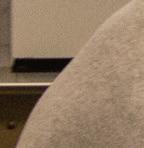








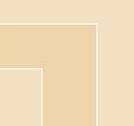



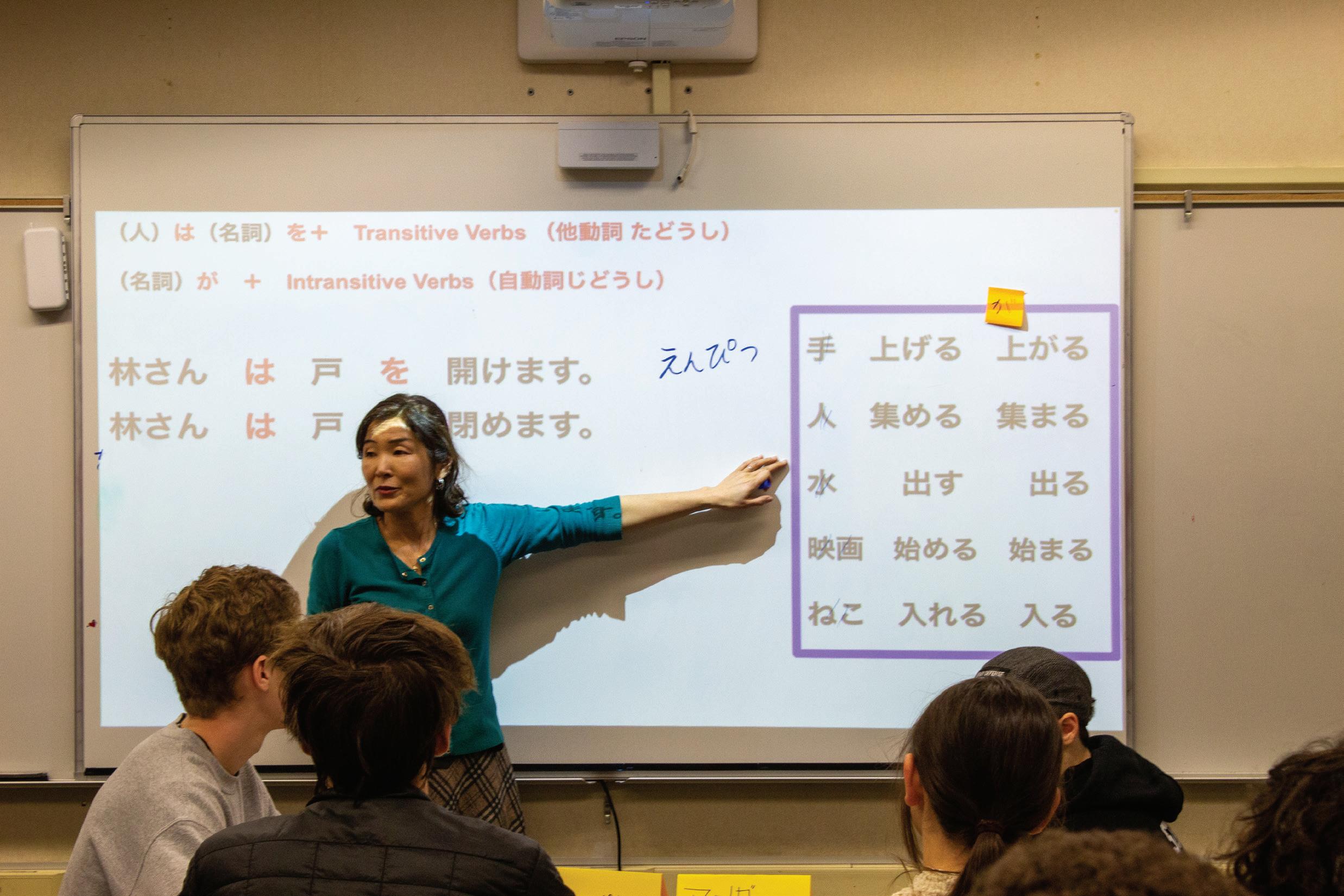

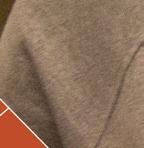

with her solid college application. This competitive pressure from the people around her to get into prestigious colleges allowed her to focus on her studies and extracurriculars to make herself a stronger leader.
On the other hand, while observing her least competitive child, she could see his worries as he didn’t feel ready for the future. He felt like he never found something he truly wanted to pursue like the other people around him, making him strive toward his dream college or career. He had hobbies and things he enjoyed, like reading Japanese novels and watching television shows, but the competitive education system he was placed into did not acknowledge his efforts in school due to his lack of direction and extra effort like extracurriculars compared to other students. This caused him great stress about what the future could hold, limiting his true capability with his second guessing. In worst-case scenarios, “A competitive culture may also give rise to academic dishonesty and questionable practices” and will cause people to do whatever it takes to get the grades they need to “survive” (Stilwell). The intense
"In most places, they just see who you are, but in Cupertino, they only see who you are in the future, or who you are going to be in the future. It's not about the present, it's about what comes next."
Junko Aoki
focus on achieving top grades at all costs can create a toxic atmosphere where students feel compelled to prioritize academic performance over integrity. This pressure to excel can lead some individuals to engage in cheating, plagiarism, or other forms of dishonest behavior as they perceive it as necessary for their survival in the fiercely competitive academic landscape. Aoki believes it’s important to be able to balance both the external pressure in academics and one’s strengths. If both of these are harmonized, good results will come out because they will even out and create a balance, but if one of the powers is too strong, neither side will be happy.
Knowing this, she does her best to keep the pressure outside the classroom with the many methods she uses, which we will dive deeper into in the next chapter.






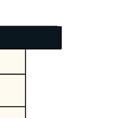














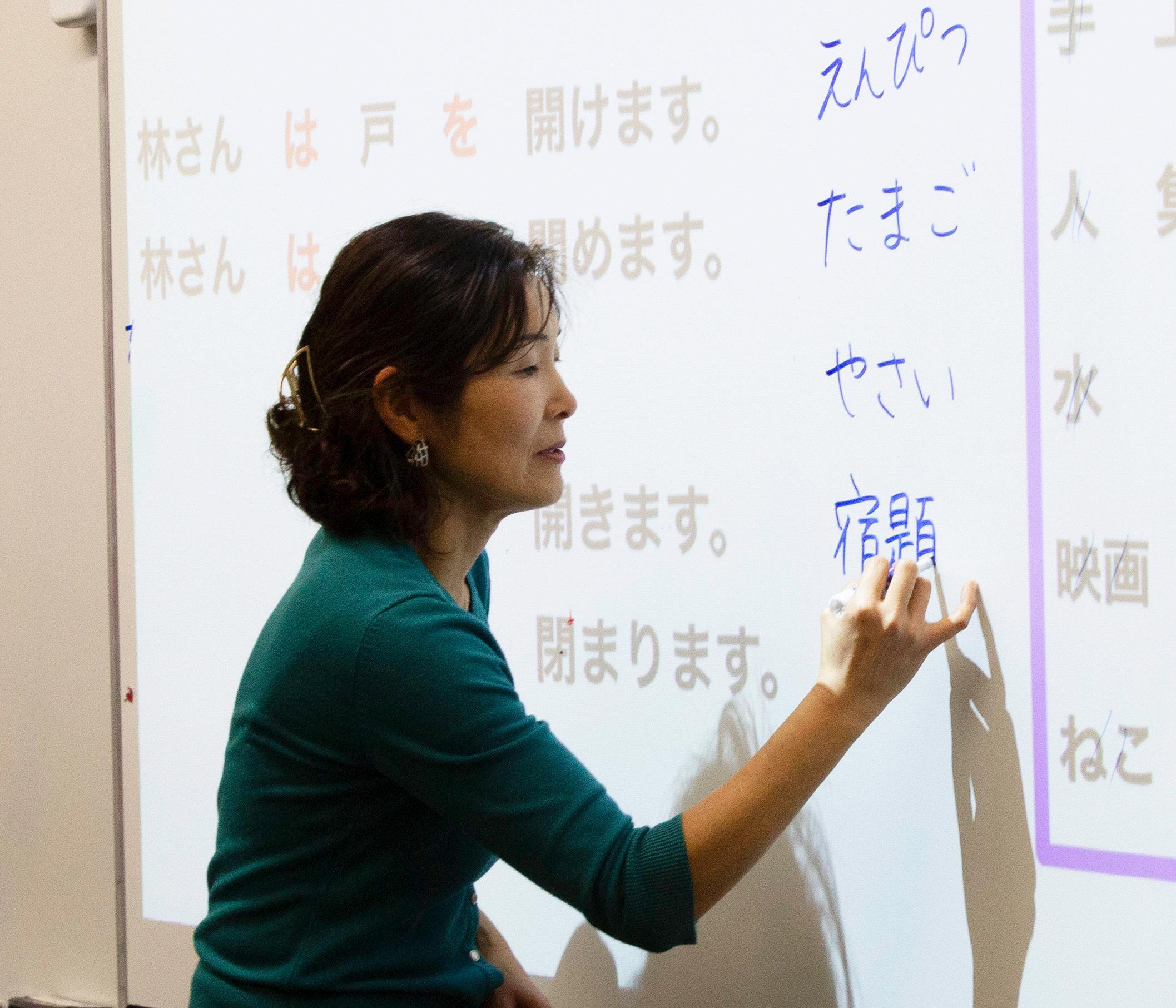
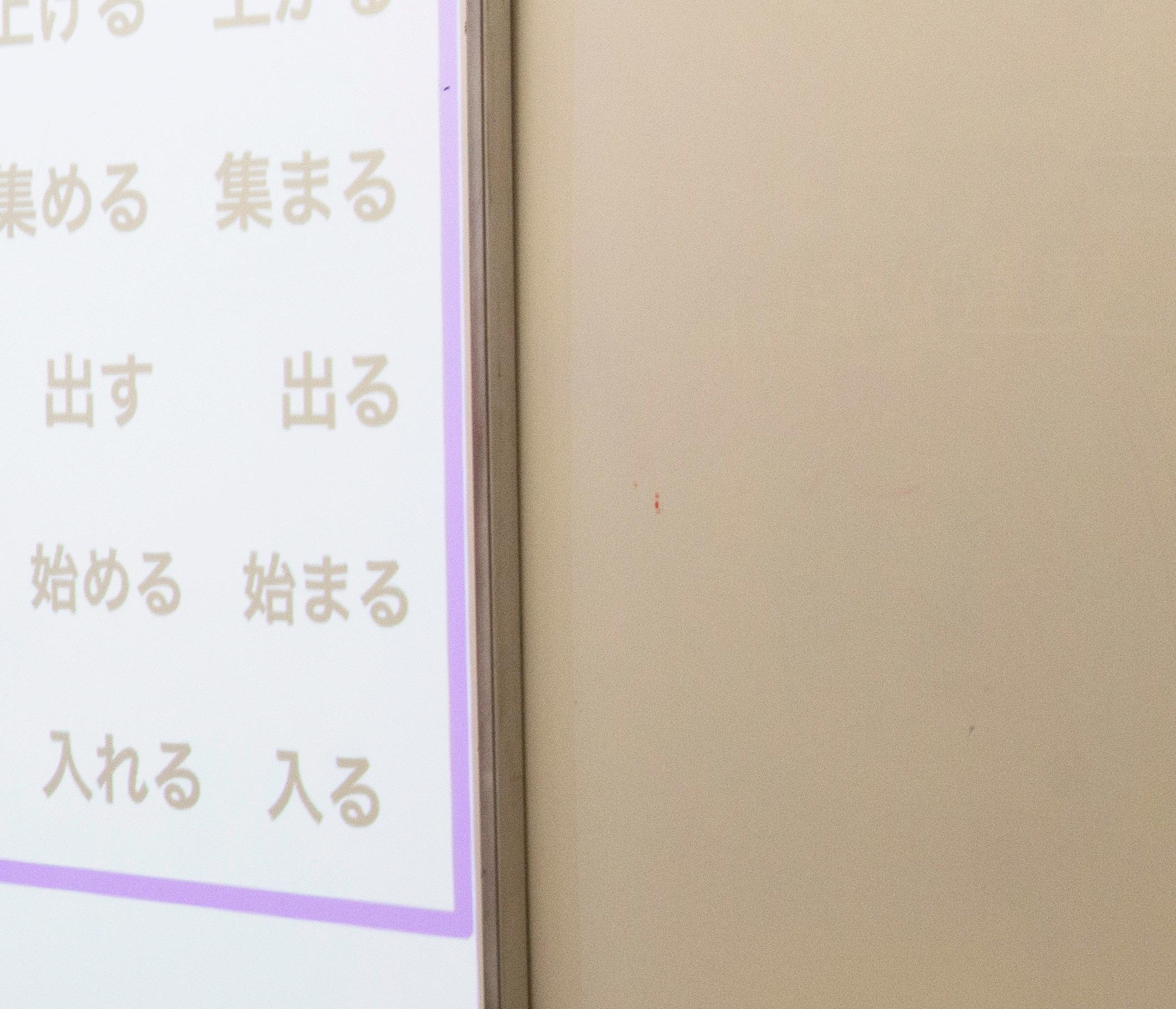















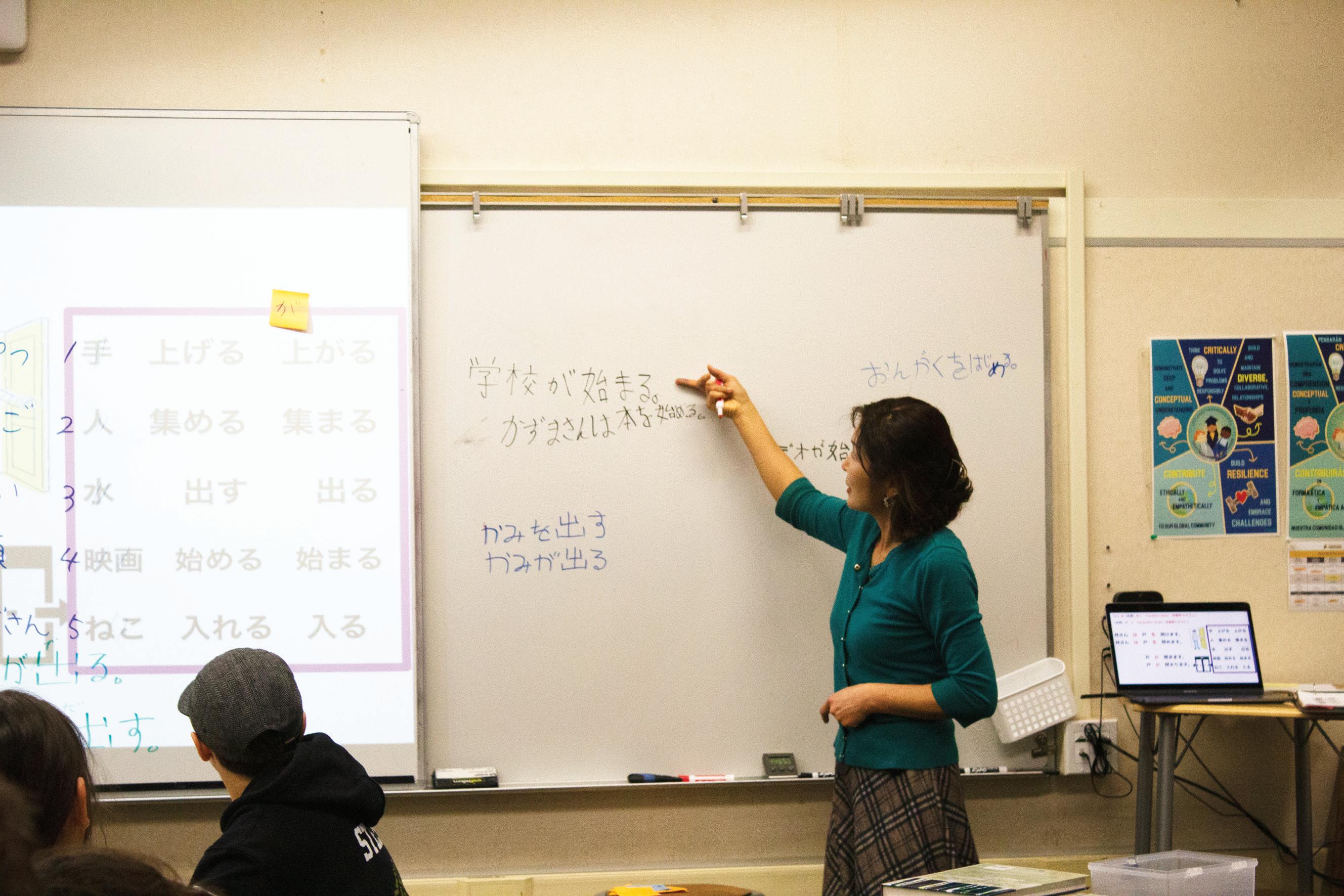














































 Junko Aoki reviewing student work
Junko Aoki reviewing student work

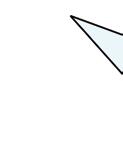













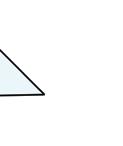




Even within this competitive education bubble, she believes that it can do good as “There are children who want to take on challenges on their own because they think they are ready for them. Some kids can do more when faced with challenges’’ (Aoki). She understands the importance of fostering a supportive and inclusive learning environment that acknowledges the individuality of each student, and how not every student needs to stick to the same routine to succeed. Using this to her advantage, she uses various teaching methods and strategies like group activities, as well as interacting events around the classes as she aims to create a space where all students can thrive and grow academically and personally even within a competitive schooling environment. Simply put, a teacher’s job is to simplify and make abstract concepts accessible to students, even though “Not all students are motivated by the same values, needs, desires and wants” (Barberos), they can still benefit from tailored teaching style approaches. Knowing this, she experiments with many different styles of teaching, trying to steer away from the traditional textbook and notes, often filled with the monotone voice of a teacher presenting for the entire period.
Junko Aoki uses one of many strategies to support her students’ learning. Before she even gets to the lesson,










where students sit is an important aspect of learning. For instance, she strategically arranges her classroom, with well-behaved students seated in the center to encourage active participation, while those with differing viewpoints are positioned at the corners to maintain engagement without
"My thinking is, if I fail here, then nobody will listen or be interested for the rest of the class."
Junko Aoki
disrupting the class’s focus. Then, when introducing a partially intriguing topic, she initiates the first question to one of the students in the corner, which often sparks lively exchanges. However, on days that require extensive explanation, she redirects questions to the students in the center as they are usually the ones to ask the most clarifying questions, leading to better comprehension among all students. But that’s not the only method she uses to ensure her students’ learning. “I spent a lot of time on the first 5 to 10 minutes of introduction, and if it is successful, the rest










































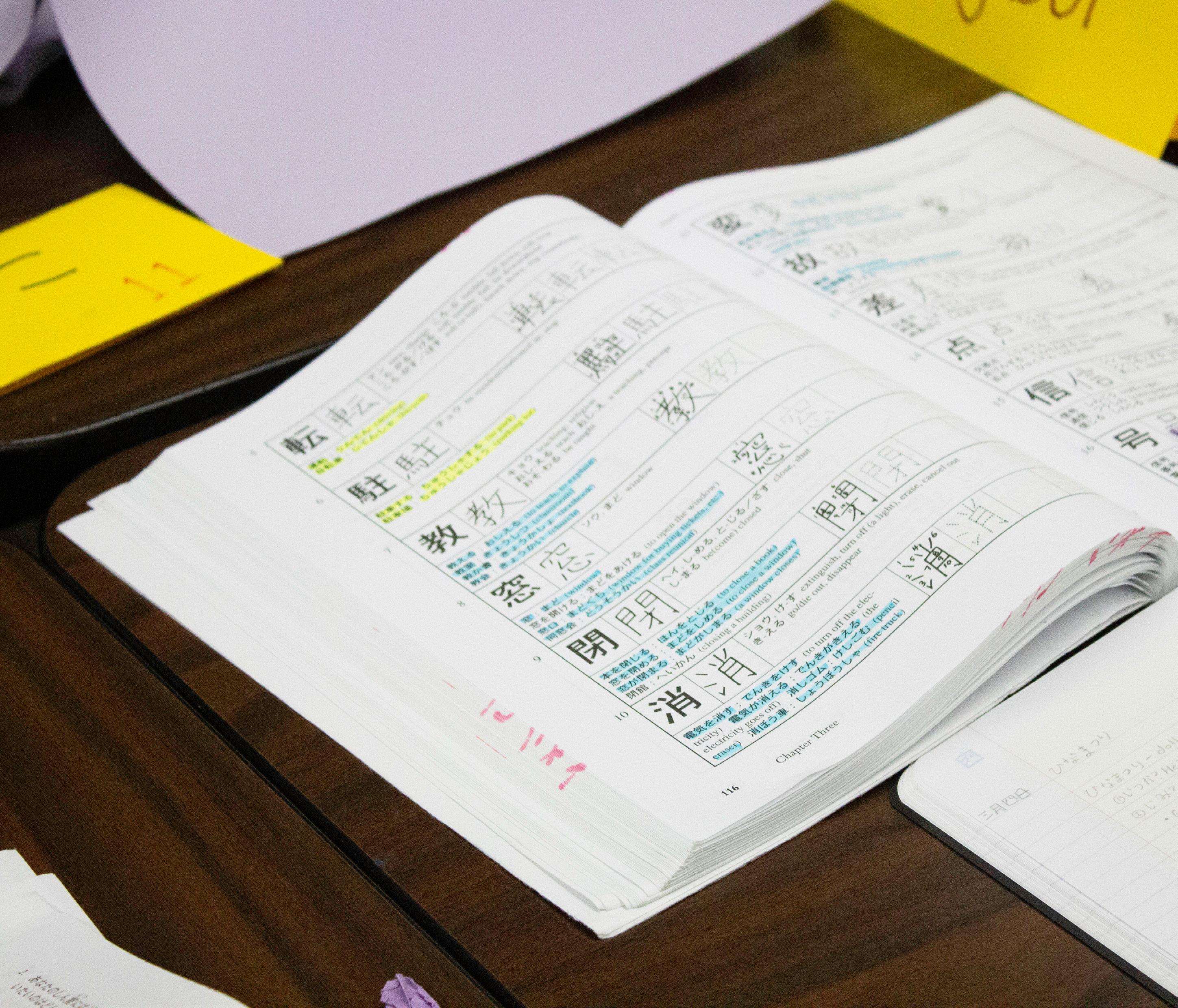
of the class will go smoothly. My thinking is, if I fail here, then nobody will listen or be interested for the rest of the class” (Aoki). By targeting the interests and age ranges of her students, she strategically incorporates engaging objects or ideas into her lessons. Whether it’s introducing a doll or toy to capture the curiosity of younger children, or posing a thought-provoking question to spark interest and discussion,
and actually teaching the stuff in class.” One of her favorite lessons was learning about Setsubun, a Japanese holiday that takes place the day before the beginning of Spring. To celebrate, families often throw beans to scare away bad spirits and demons, which the class was able to replicate. One student pretended to be a demon, while everyone tried to scare them away with beans. This interactive activity was one of her
"I want all twenty five students to ask 'What is that?' and I will continue the introduction until I have all twenty five students' attention."
Junko Aoki


she ensures that every student’s attention and learning styles are considered. “I want all twenty-five students to ask ‘What is that?’ and I will continue the introduction until I have all twenty-five students’ attention.” It’s no easy feat, and even Aoki admits that “Getting there can be difficult. It’s hard work, but I’m having a lot of fun.”
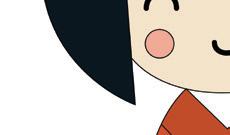
One of Aoki’s students from the year before, Emma Zhang, still thinks highly of her class: “It was a really fun class and she did a really good job entertaining the students and getting people excited to learn… She did a good job of balancing fun
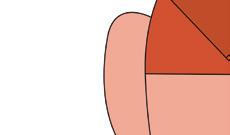



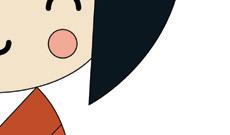
most memorable lessons and made learning about Japanese Culture more engaging than her normal language classes. By using these teaching strategies and creating a dynamic learning environment, she encourages and nurtures the learning of her students, and tries to create a fun lighthearted community within her classroom to avoid the competitive atmosphere often seen in Silicon Valley.
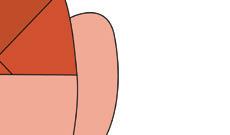
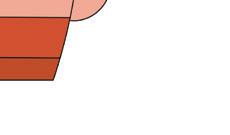





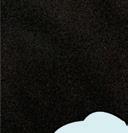
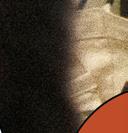





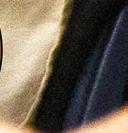









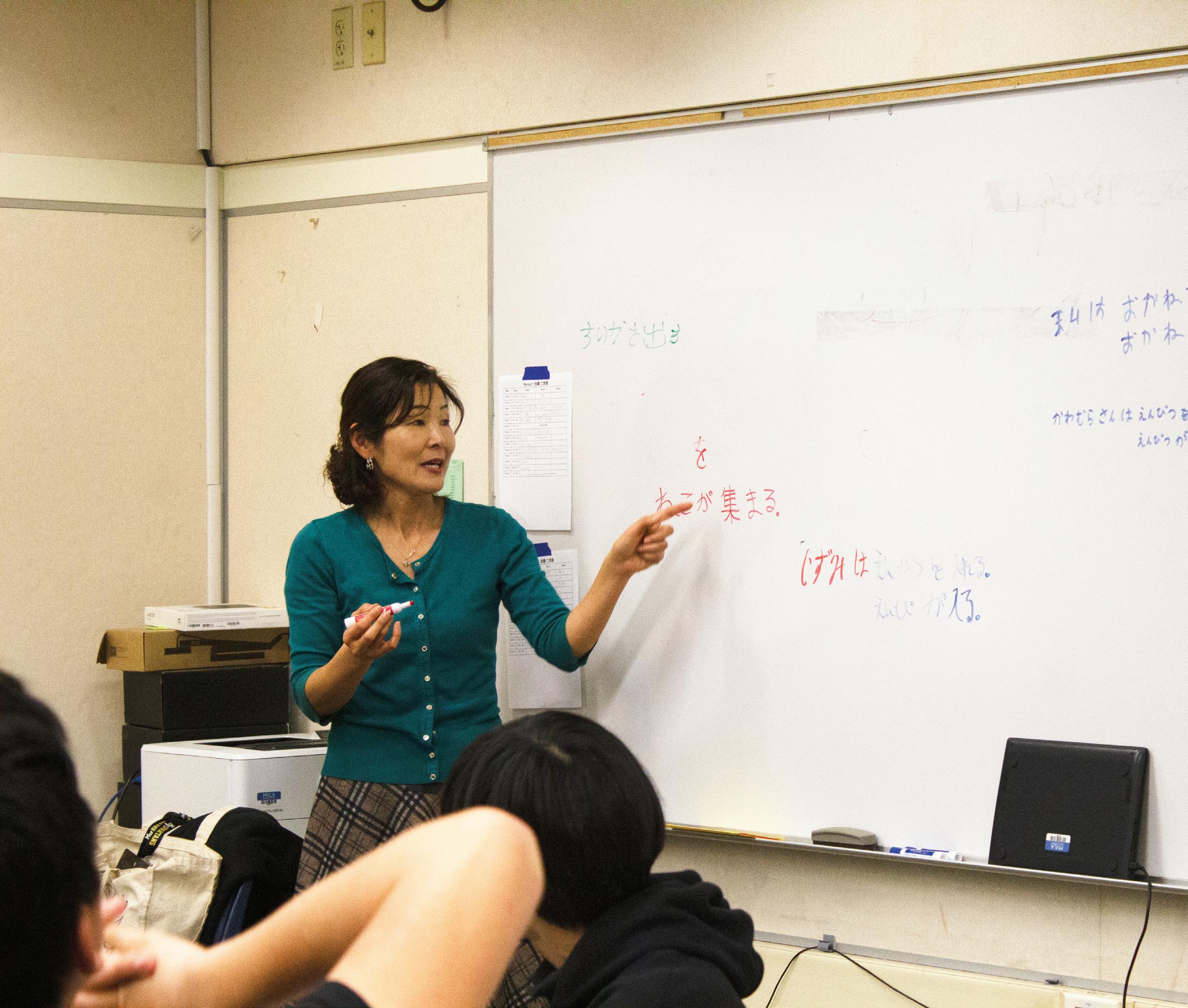

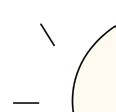

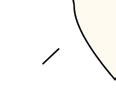



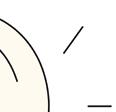


Now, Aoki is the official substitute teacher at Mountain View High School’s Japanese III class. She hopes to encourage her students to continue learning Japanese in a way that is both entertaining to herself and her students. “I think the most important thing when children are striving to do something, is to encourage them by saying, ‘You can do it’”. Dedicated to her role as an educator, she eagerly anticipates the opportunity to expand her teaching responsibilities by becoming an AP Japanese teacher. Using her methodology, she wishes to engage more students in learning Japanese with interactive activities like replicating events combined with visual and audio learning to entertain and engage, straying away from
the traditional textbook and notebook methods one may find in AP classes.
Even when faced with rigidity and societal constraints, it’s crucial to recognize that growth and progress are always possible. As Aoki reflects, “I still want to convey that you can still improve, believe, and take action. It’s better to know that there’s someone pushing you forward like this, rather than being passive.” Despite the challenges posed by a rigid social bubble in competitive schooling, with her wealth of teaching experience and versatility, she remains dedicated to nurturing her student’s minds and fostering an environment for growth and positivity in her classroom.
"I think the most important thing when children are striving to do something, is to encourage them by saying, 'You can do it'"
Junko Aoki

Aoki, Junko. Personal interview. 02 February 2024.
“Nickerson, Charlotte. “Individualistic Cultures and Example Behavior.” Simply Psychology, 18 Oct. 2023, www.simplypsychology. org/what-are-individualistic-cultures.html. Accessed 7 Mar. 2024.
Stilwell, Doug. “Education at a Crossroads: The Perils of Competition in K-12 Education.” The W. Edwards Deming Institute, 2 Nov. 2023, deming.org/education-at-a-crossroads-the-perils-of-competition-in-k-12-education/. Accessed 7 Mar. 2024.
Theresa Barberos, Maria, et al. The Effect of the Teacher’s Teaching Style on Students’ Motivation. NYC Steinhardt, steinhardt. nyu.edu/departments/teaching-and-learning/research/practitioner-action-reseach/effect-teachers-teaching. Accessed 7 Mar. 2024.
Thompson, Derek. Everybody’s in a Bubble, and That’s a Problem. The Atlantic, 25 Jan. 2017,www.theatlantic.com/business/ archive/2017/01/america-bubbles/514385/. Accessed 14Mar. 2024.
Zhang, Emma. Personal interview. 01 March 2024.
Note on the use of generative AI:



I used ChatGPT in the process of writing this paper. I did not borrow directly from the results, but I used the following prompts to expand on how in societies characterized by strict social hierarchies and




competitive educational systems, acknowledging the individuality of students is essential to provide effective education, breaking the bubble and fostering inclusive learning environments.. The results helped me brainstorm ideas on how to connect each of my topics together. I also used Chat GDP to check for grammatical correctness. Here are the prompts I applied and how I used the results.

- “How does living in a bubble connect to living in a competitive educational system?” The results showed me that living in a bubble can connect to living in a competitive education system because both are very similar in the way that living in a bubble and a competitive education system are very similar to each other as they both change the behavior of people.
- “How do different teaching methods connect to living in a competitive educational system?” The results told me that teaching methods could connect to living in a competitive educational system because with different teaching methods, one can overcome the challenge of living in a competitive educational system.
- While using generative AI to edit to ensure my profiles identity and sensitive information I replaced the interviewees’ private information with generic placeholders like “X” or a blank underline. Through this process, I ensured that the AI’s edits did not read any personal details about my interviewees, allowing them to maintain their privacy.
- Anatomizing my interviewee from before, I asked the AI to “Check for basic grammar errors” and allowed me to get rid of errors.











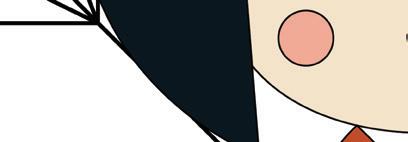







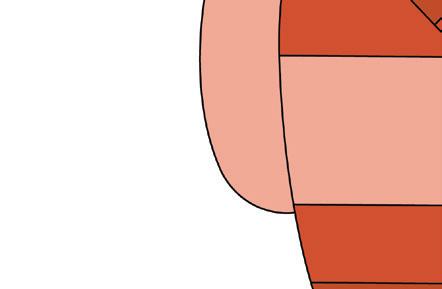

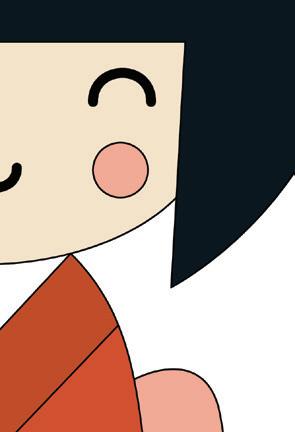






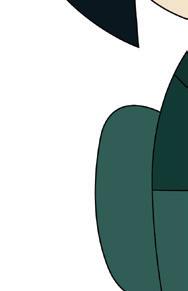




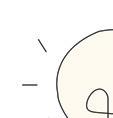
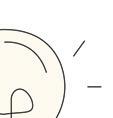


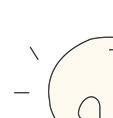
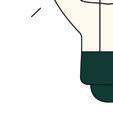
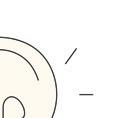

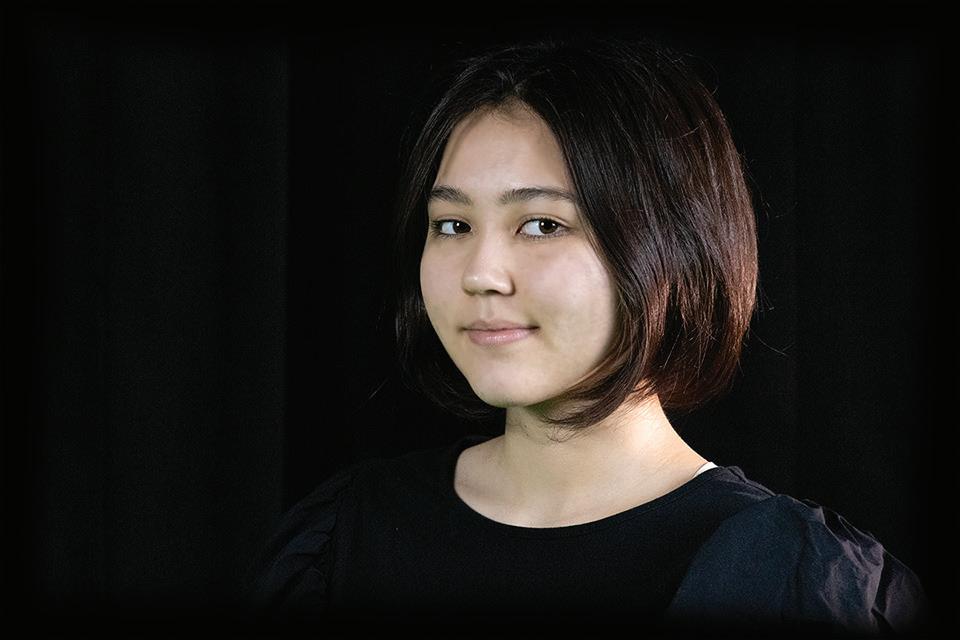
Maisie Rennie is a Mountain View High School Junior who studies Design at Freestyle Academy. She lives in Mountain View with her parents and older sister. She is highly active in her school’s dance program, Dance Spectrum, and is currently one of the treasurers. Outside of school, Maisie enjoys baking, cooking, hanging out with friends and family, sleeping, and doing various arts and crafts. She is excited to continue dancing and expressing her creativity through many more exciting projects at Freestyle Academy.


























